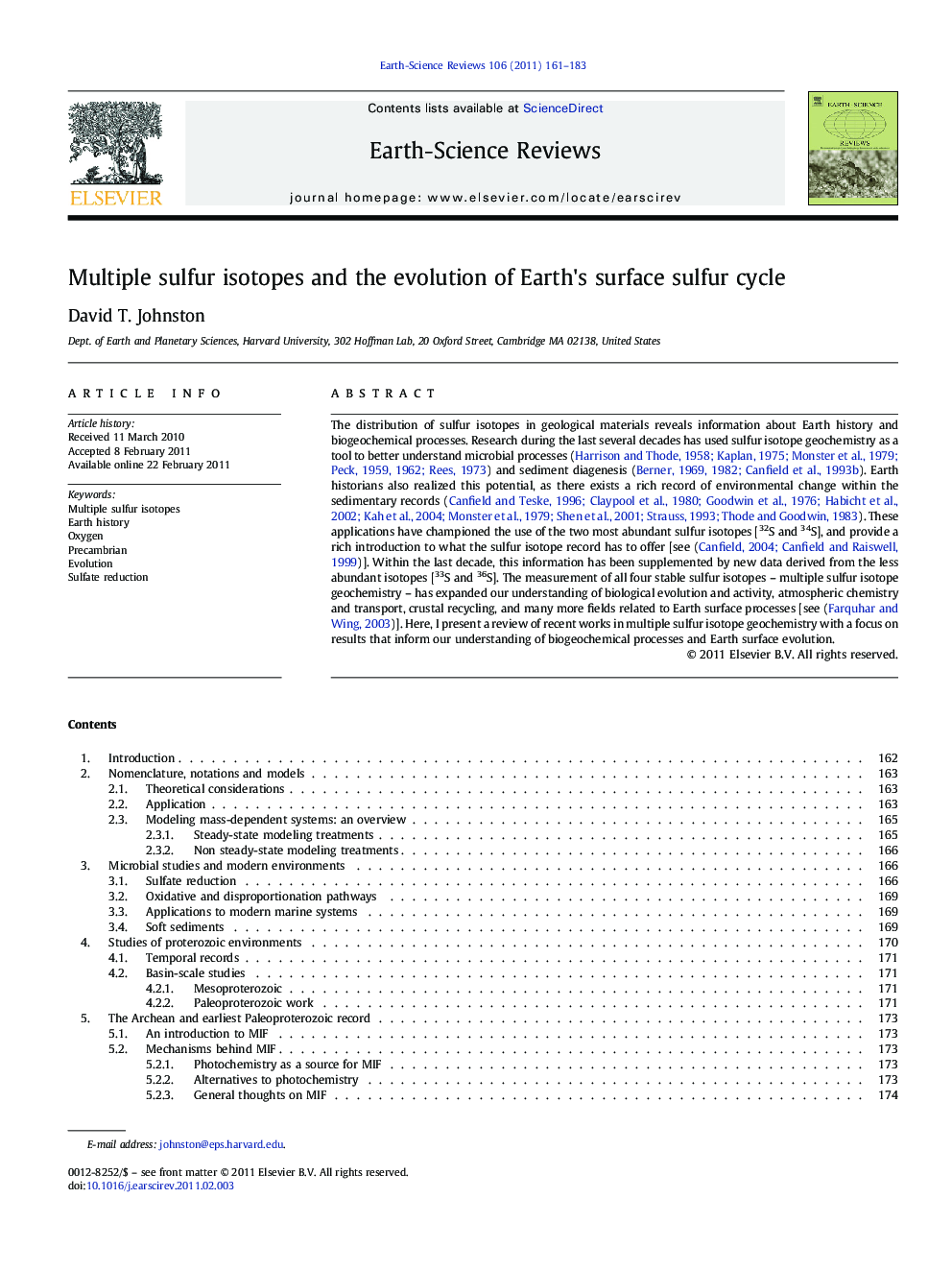| Article ID | Journal | Published Year | Pages | File Type |
|---|---|---|---|---|
| 4726157 | Earth-Science Reviews | 2011 | 23 Pages |
The distribution of sulfur isotopes in geological materials reveals information about Earth history and biogeochemical processes. Research during the last several decades has used sulfur isotope geochemistry as a tool to better understand microbial processes (Harrison and Thode, 1958, Kaplan, 1975, Monster et al., 1979, Peck, 1959, Peck, 1962 and Rees, 1973) and sediment diagenesis (Berner, 1969, Berner, 1982 and Canfield et al., 1993b). Earth historians also realized this potential, as there exists a rich record of environmental change within the sedimentary records (Canfield and Teske, 1996, Claypool et al., 1980, Goodwin et al., 1976, Habicht et al., 2002, Kah et al., 2004, Monster et al., 1979, Shen et al., 2001, Strauss, 1993 and Thode and Goodwin, 1983). These applications have championed the use of the two most abundant sulfur isotopes [32S and 34S], and provide a rich introduction to what the sulfur isotope record has to offer [see (Canfield, 2004 and Canfield and Raiswell, 1999)]. Within the last decade, this information has been supplemented by new data derived from the less abundant isotopes [33S and 36S]. The measurement of all four stable sulfur isotopes – multiple sulfur isotope geochemistry – has expanded our understanding of biological evolution and activity, atmospheric chemistry and transport, crustal recycling, and many more fields related to Earth surface processes [see (Farquhar and Wing, 2003)]. Here, I present a review of recent works in multiple sulfur isotope geochemistry with a focus on results that inform our understanding of biogeochemical processes and Earth surface evolution.
